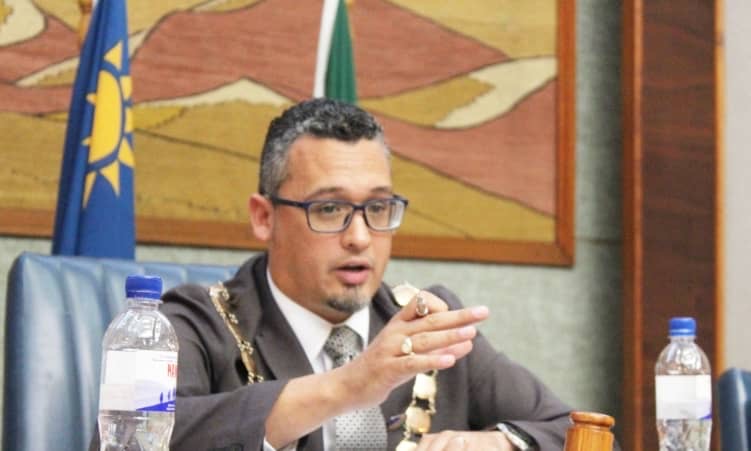AN agreement on the establishment of the Kavango-Zambezi Transfrontier Conservation Area (KaZa), which involves five southern African countries, will be signed next month.
Dr Fanuel Demas, the Deputy Director for Scientific Support Services in the Ministry of Environment and Tourism, told The Namibian that the memorandum of understanding on the KaZa project would be signed at Victoria Falls in Zimbabwe on November 2. The cross-boundary initiative involves Namibia, Angola, Botswana, Zambia and Zimbabwe.Demas said the aim of the KaZa project is to establish a world-class transfrontier conservation area within the context of sustainable development.Several meetings at technical and ministerial level have already been held.A pre-feasibility study, funded by the South African Peace Parks Foundation (PPF), found that the initiative holds great promise for the five member countries and the SADC region as a whole.The signing of the memorandum will pave the way for fundraising for the project.The KaZa area encompasses 278 000 square kilometres of savannah, woodlands, rivers and wetlands.Fourteen existing parks and game reserves are in this area, as well as a large number of conservancies, game management areas and tourism or hunting concessions.This development includes such well-known natural features and tourist attractions as the Okavango delta, the Victoria Falls, the Kafue wetlands, as well as considerable tracts of riverine habitats along the Okavango and Zambezi rivers and their tributaries.such as the Kwando, Chobe and Quito rivers.In this area is Africa’s largest elephant population, as well as major populations of a wide range of species such as buffalo, hippopotamus, lion, lechwe, roan, sable, eland, zebra, wildebeest, water buck, puku, bushbuck, sitatunga, wild dog and spotted hyena.It is one of the regions with the greatest tourism development potential in Africa, and has outstanding tourism facilities and infrastructure, with room for much more.KaZa has already been recognised by the SADC Secretariat as a SADC project.This recognition will give the KaZa initiative access to funding channelled by donors through SADC for regional projects.Demas said Namibia was proud to be associated with this conservation initiative, which would contribute to regional development as well as the upliftment of communities through sustainable utilisation of wildlife and responsible tourism.The cross-boundary initiative involves Namibia, Angola, Botswana, Zambia and Zimbabwe.Demas said the aim of the KaZa project is to establish a world-class transfrontier conservation area within the context of sustainable development.Several meetings at technical and ministerial level have already been held.A pre-feasibility study, funded by the South African Peace Parks Foundation (PPF), found that the initiative holds great promise for the five member countries and the SADC region as a whole.The signing of the memorandum will pave the way for fundraising for the project.The KaZa area encompasses 278 000 square kilometres of savannah, woodlands, rivers and wetlands.Fourteen existing parks and game reserves are in this area, as well as a large number of conservancies, game management areas and tourism or hunting concessions. This development includes such well-known natural features and tourist attractions as the Okavango delta, the Victoria Falls, the Kafue wetlands, as well as considerable tracts of riverine habitats along the Okavango and Zambezi rivers and their tributaries.such as the Kwando, Chobe and Quito rivers. In this area is Africa’s largest elephant population, as well as major populations of a wide range of species such as buffalo, hippopotamus, lion, lechwe, roan, sable, eland, zebra, wildebeest, water buck, puku, bushbuck, sitatunga, wild dog and spotted hyena.It is one of the regions with the greatest tourism development potential in Africa, and has outstanding tourism facilities and infrastructure, with room for much more.KaZa has already been recognised by the SADC Secretariat as a SADC project.This recognition will give the KaZa initiative access to funding channelled by donors through SADC for regional projects.Demas said Namibia was proud to be associated with this conservation initiative, which would contribute to regional development as well as the upliftment of communities through sustainable utilisation of wildlife and responsible tourism.
Stay informed with The Namibian – your source for credible journalism. Get in-depth reporting and opinions for
only N$85 a month. Invest in journalism, invest in democracy –
Subscribe Now!










